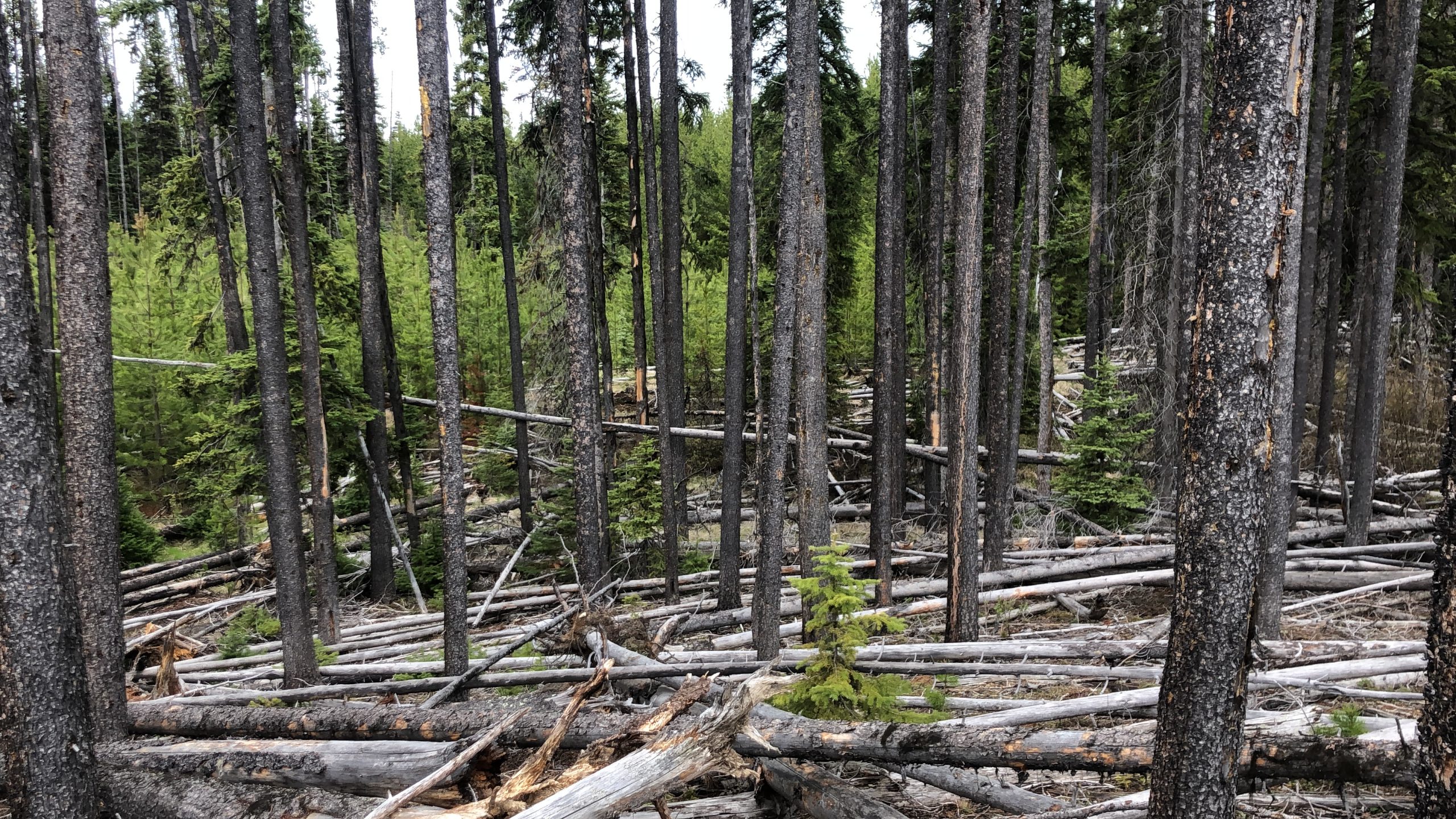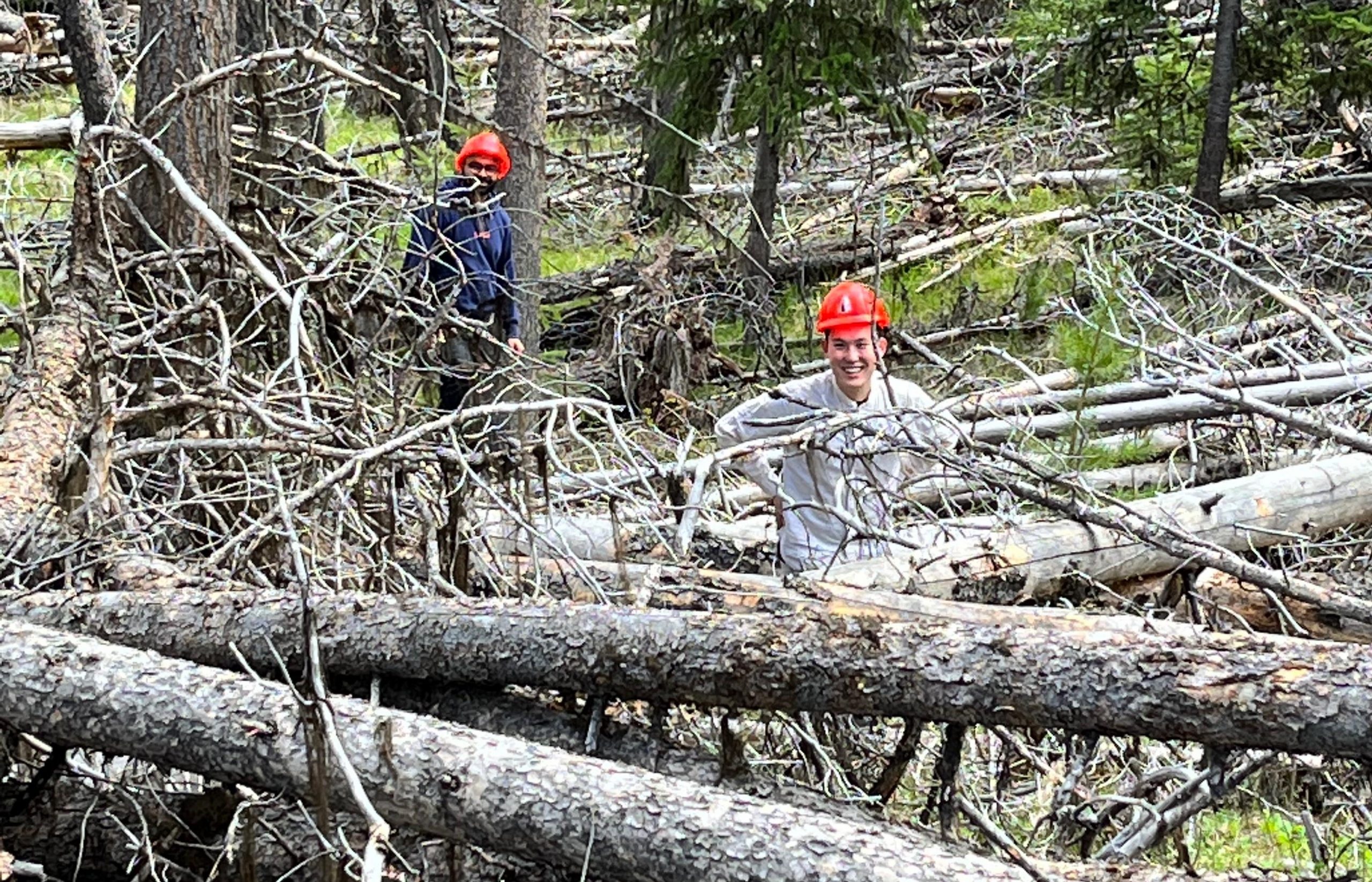Projecting suitable MPB habitat across the boreal forests
MOUNTAIN PINE BEETLES return to a low-density endemic phase following an epidemic population collapse. Endemic populations are difficult to detect through conventional survey methods. Recent studies suggested that endemic mountain pine beetles thrive in host stands with higher densities due to sufficient input of host material. Using stand density index, along with climatic suitability models, we propose a synthetic endemic suitability index (ESI) model to quantify suitable habitats. ESI will greatly benefit proactive management and subsequently mitigate the potential for future MPB outbreaks.
“Mountain pine beetles are so visible yet invisible depending on their population phase. We aim to determine where MPBs like hanging out during their downtime, so that we are well prepared when they decide to riot.”
– Lucas Peng
Exploring spread capabilities of endemic MPB
After quantifying suitable habitats, we will be exploring spread models of endemic MPB through analyzing aerial overview survey data and ESI projections. Does the endemic habitat in Canada support an eastern spread of MPB? Understanding the potential of endemic MPB spread will contribute to risk assessment, operational decisions, and policy development. In addition, we aim to bridge the current data gaps among provinces by utilizing national forest inventory (NFI) data.


